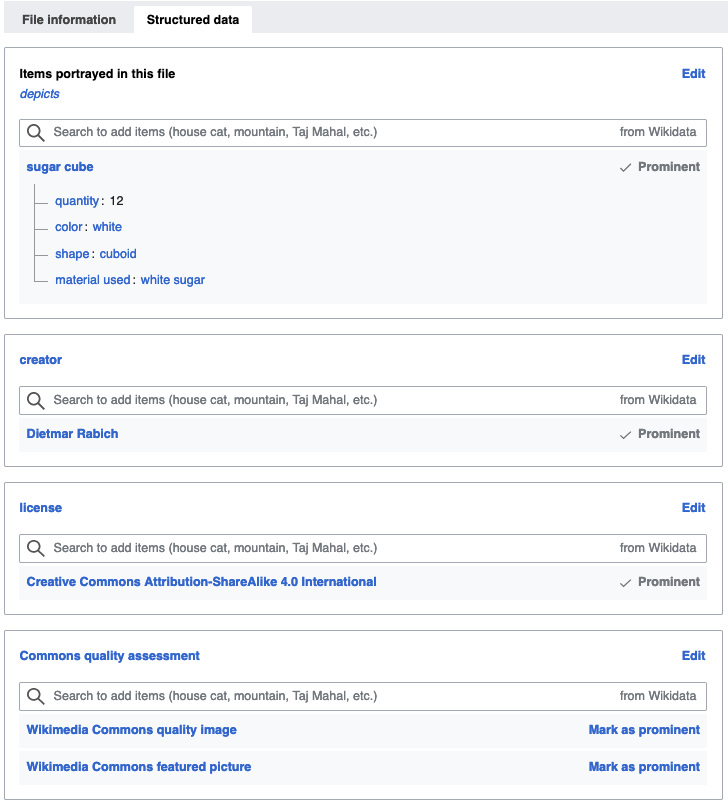With depicts statements available to make the most basic claims about files on Commons, it was time to make more fully-formed statements. The Structured Data on Commons development team developed and released the first level of support for types of statements other than depicts.
“Other statements” offer expanded data about a file. Wikidata properties such as creator (P170), location (P276), Commons quality assessment (P6731), license (P257), and more. For an example of depicts plus other statements, here’s a file that is an image of sugar cubes:

This is the representation of the file in structured data, using depicts with qualifiers in combination with other statements:

This information is “machine-readable,” meaning that people can write software to interact with it, soon there will be the power to query the data, and a host of other potential uses. Lucas Werkmeister wrote a separate blog covering some of the possibilities of Structured Data on Commons. Importantly, all of this information is multilingual as well, as previously most data was restricted to English when used in templates and categories.
Taken as a whole, depicts and other statements, contributors to Wikimedia Commons can now begin to fully contribute structured data. The development team continues to work on support for different data beyond words, such as geocoordinates, time stamps, and other such types. Additional support for community tools such as Lua functionality is making progress as well. After this multi-year effort, the partners involved in the project can start the work of building a more accessible Commons at last.
Previously: Part Four – Depicts Statements

Can you help us translate this article?
In order for this article to reach as many people as possible we would like your help. Can you translate this article to get the message out?
Start translation